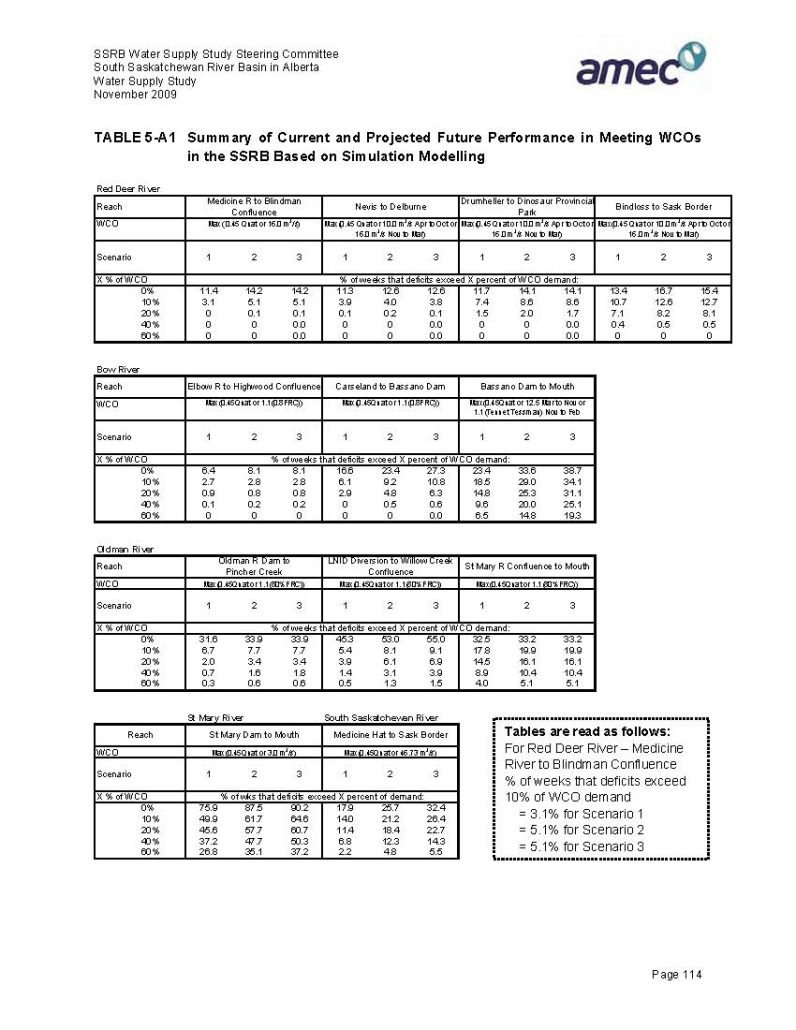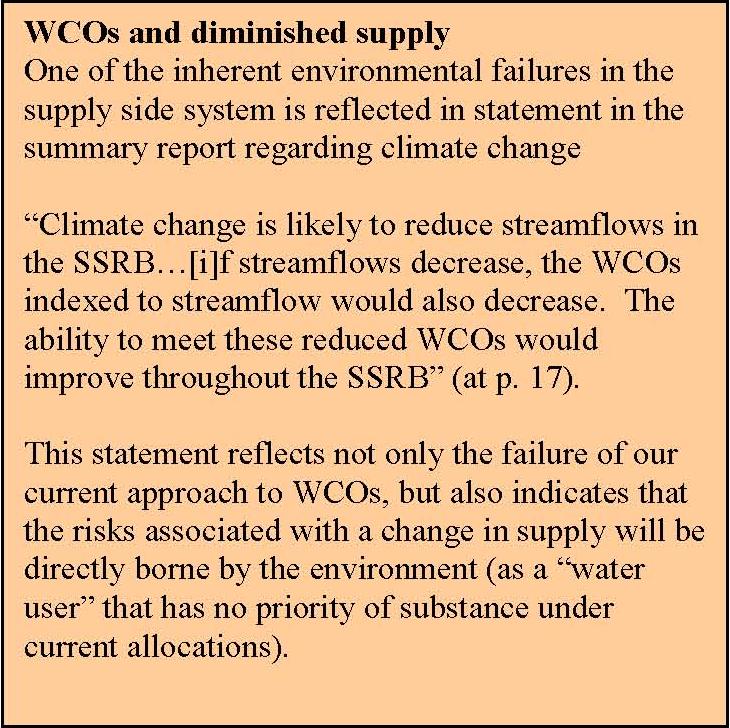The rivers be dammed, or is that damned?
By Jason Unger
Staff Counsel, Environmental Law Centre
If we are serious about aquatic ecosystem health in the South Saskatchewan River Basin (SSRB) we have to really start talking about two things; irrigation and growth. The South Saskatchewan River Basin in Alberta Water Supply Study (the Supply Study) outlines various scenarios of growth in the irrigation sector while acknowledging that “environmental flows” will continue to be undermined. The “environmental flows” are embodied by the “water conservation objective” or WCO set for the SSRB at 45% of the mean flow (or 10% above preexisting instream objectives, whichever is greater) and reflect a negotiated rather than a scientifically based amount for the protection of the aquatic environment.
The Supply Study outlines that, in the all scenarios modeled, the WCO will be undermined in most reaches of the SSRB (See at Table 5- A1 and 5-B1 of the consultant’s main report . Table 5-A1 from the report is reproduced below.).
The Study also indicates that building more on-stream storage, i.e., dams, and flow regulation will assist in reducing deficits to WCOs and junior licence holders (see page 19 of the Summary report ).
What the Supply Study does very well is bring into relief vastly different visions for managing the SSRB. One vision of continued alteration of the landscape, i.e., engineering water supply solutions, vs. a vision of altering behaviours and our concepts of growth to limit our demand on natural systems.
So where is the “Demand Study”?
Supply side management, an approach to water management that has been with us for generations, is a system that facilitated western settlement and has fostered an irrigation based rural economy. It has also resulted in a significant shift in ecosystems.
The Supply Study calls for mitigating impacts through altered operations and proposes more on-stream dams to provide for irrigation growth.
A report focused on demand side management would be a welcome counterpoint to the Supply Study as demand management attempts to foster behaviours to live within natural supply limitations, seeking to live within the bounds of our environmental resources.
This choice between supply and demand in how we manage water allocations must be front and centre for any water allocation review undertaken by government. Should we continue to dam (or damn) rivers and expand irrigation or should we cap irrigation and shift to behaviours that respect environmental constraints (however inadequate they might be)?
ABOUT THE ENVIRONMENTAL LAW CENTRE:
The Environmental Law Centre (ELC) has been seeking strong and effective environmental laws since it was founded in 1982. The ELC is dedicated to providing credible, comprehensive and objective legal information regarding natural resources, energy and environmental law, policy and regulation in Alberta. The ELC’s mission is to educate and champion for strong laws and rights so all Albertans can enjoy clean water, clean air and a healthy environment. Our vision is a society where laws secure an environment that sustains current and future generations.
As a charity, the Environmental Law Centre depends on your financial support. Help us to continue to educate and champion for strong environmental laws, through tools such as our blog and all of our other resources, so that all Albertans can enjoy a healthy environment. Your support makes a difference.
Donate online today


